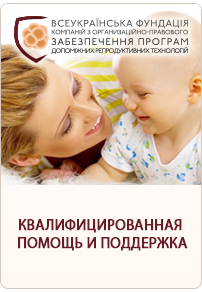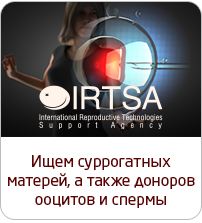IVF: Some Doctors Suggest a Milder, Cheaper Form for Some Women
With the number of babies born through in vitro fertilization at an all-time high, some doctors are trying an alternative that potentially could be less expensive and less taxing on a woman's body.
Some fertility clinics are offering a gentler version of IVF that uses fewer, milder drugs and requires less frequent medical visits.
Success rates aren't well established. The American Society for Reproductive Medicine says pregnancy rates from minimal-stimulation IVF are likely to be lower than with traditional IVF. Indeed, if the milder kind doesn't succeed and women return for additional cycles, the cost can quickly approach or exceed traditional IVF, some doctors say.
For the first time, the organization that publishes clinics' success rates, the Society for Assisted Reproductive Technology says it will break out success rates for minimal-stimulation cycles in its 2014 statistics, which will be released in 2016. The odds of successfully having a baby after any form of IVF averaged about 37% per cycle in 2012. The odds vary by factors including a woman's age and the number of eggs retrieved.
Babies conceived using IVF made up 1.5% of all births in 2012, according to the ASRM. Those bundles of joy come at a cost—an average of $12,400 per IVF cycle not including drugs that can add thousands more. Insurance coverage varies.
In general, the cost of minimal stimulation could be 50% to 60% of the cost of a full stimulation cycle, says Suheil Muasher, a reproductive endocrinologist at the Duke Fertility Center in Durham, N.C.
In conventional IVF, a woman typically is prescribed injectable drugs to stimulate her ovaries to make more eggs than they would without medication. Eggs are harvested, combined with sperm in a laboratory and the embryos later transferred into a woman's uterus in the hopes they'll successfully produce a pregnancy.
There is no universal definition for mild or minimal-stimulation IVF. Terminology developed by the International Society for Mild Approaches in Assisted Reproduction defines it as a protocol consisting of milder doses of injectable drugs, oral drugs or a combination of both that aims for the collection of two to seven eggs, based on published research. Conventional IVF aims for more eggs.
The minimal approach requires fewer doctor visits for blood work and ultrasound monitoring. The medication savings from this approach can be between $3,000 and $8,000, says Dr. Muasher. "It's more patient-friendly, it's less costly and for some patients it has fewer complications," he says.
Proponents say it is a particularly good option for patients who have a very strong response to fertility drugs and are at high risk of ovarian hyperstimulation syndrome, a potentially dangerous complication. Women can be at high risk due to previous IVF history or risk factors like polycystic ovary syndrome or being young with irregular cycles.
They also say it is an alternative for women, including many older ones, who produce just a few eggs in response to drugs, regardless of the dose. It is also appropriate for women who don't want to be faced with a decision about what to do with embryos they don't use.
Neeburbunn Lewis, a 35-year-old nurse living near Portland, Maine, and her husband spent between $20,000 and $25,000 for the single cycle of conventional IVF that produced her first child. When the couple wanted a second child, "financially, going through another cycle was not feasible," she says. She also experienced ovarian overstimulation that put her in the hospital when she went through IVF. "I could not put my body through that again," she says. She heard about minimal-stimulation IVF from her OB-GYN and did one cycle at the Maine location of Boston IVF. Her cost this time: $5,000. She is eight months pregnant with her second child.
Ms. Lewis's reproductive endocrinologist, Benjamin Lannon, says he sees minimal-stimulation IVF as an option "where cost is the primary barrier" to access. But patients need to understand their chances of getting pregnant per cycle are lower than with conventional stimulation, he says.
To perform a milder course of IVF, Sherman Silber, director of the Infertility Center of St. Louis, uses an inexpensive oral drug and low, infrequent doses of injectable drugs to stimulate women to produce only a modest amount of eggs at one time, which he says increases their average quality. In some cases, if enough embryos aren't produced in one cycle, they are frozen and the cycle is repeated until there are several more embryos to transfer.
Dr. Silber's research, presented at the October ASRM meeting, found it was more effective, with a higher pregnancy rate per egg, and less expensive than traditional IVF for women 40 and older and for women with low ovarian reserve. Dr. Silber is preparing to submit his data to a peer-reviewed journal.
Still, the likelihood of needing to repeat minimal-stimulation IVF for success has some doctors concerned. "I would argue that the evidence speaks against it," says Norbert Gleicher, medical director of the Center for Human Reproduction, a fertility center in New York. He was an author of a 2012 study published in Reproductive BioMedicine Online that compared 14 women under age 38, with normal ovarian function who underwent low-intensity IVF to 14 who had regular IVF. The low-intensity regimen "reduced pregnancy chances without demonstrating cost advantages," the study found. Dr. Gleicher is now trying to get funding for a randomized trial to compare the two approaches.
Zev Rosenwaks, director of the New York-Presbyterian/Weill Cornell Medical Center for Reproductive Medicine, says while minimal stimulation might work for some women, his own experience suggests that moderate stimulation—with nine or 10 eggs as the ideal and using the lowest dose of drugs possible—produces the most success with the lowest risk of complications. He says he has seen "too many [women] to count" who have tried and failed with minimal stimulation at other clinics.
www.online.wsj.com
- The central office of IRTSA Ukraine completely restores work
- How we work during the COVID-19 pandemic
- 1st International Congress on Reproductive Law
- Soon Americans may face a new ethical dilemma
- ‘Friends’ star Jennifer Aniston is pregnant with twins
- Image processing technology can impact the success rates of ivf
- Editing genes of human embryos can became the next big thing in genetics
- Supermodel Tyra Banks undergoes IVF
- Scientists discovered a new, safer way for egg freezing
- French scientists have managed to grow human sperm cells in vitro









